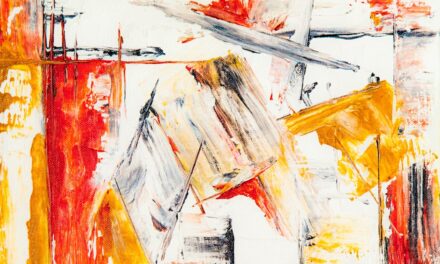When delving into the world of pastels, it is essential to grasp the fundamental differences between soft pastels and oil pastels, as each medium offers unique characteristics and possibilities. Soft pastels are composed of pure pigment combined with a minimal amount of binder, resulting in a chalky texture that allows for vibrant colour application. They are known for their delicate, powdery finish and can be easily blended to create smooth transitions and subtle gradations.
Artists often favour soft pastels for their ability to produce soft edges and intricate details, making them ideal for portraiture and landscapes. In contrast, oil pastels contain a waxy binder mixed with pigment, which gives them a creamy consistency. This composition allows for a more intense colour application and a different approach to blending.
Oil pastels can be layered and manipulated in ways that soft pastels cannot, providing artists with the ability to create bold, striking images with a glossy finish. The inherent qualities of oil pastels make them suitable for a variety of techniques, including impasto and sgraffito, which can yield exciting results. Understanding these distinctions is crucial for artists seeking to choose the right medium for their creative expression.
Summary
- Soft pastels are made from pure pigment and have a chalky texture, while oil pastels are made from a mixture of pigment, non-drying oil, and wax, giving them a creamy consistency.
- Blending soft pastels involves using fingers, blending stumps, or brushes to create smooth transitions between colours, while layering allows for building up depth and intensity.
- Creating texture with soft pastels can be achieved by using various tools such as sponges, tissues, or even scratching into the surface with a pointed tool.
- Oil pastels are versatile and can be used on a variety of surfaces, including paper, canvas, wood, and even glass, allowing for a wide range of artistic possibilities.
- Mixing and blending colours with oil pastels can be done directly on the surface or by layering different colours to create new shades and effects.
Blending and layering techniques for soft pastels
Blending is one of the most celebrated techniques in soft pastel work, allowing artists to achieve seamless transitions between colours. One popular method involves using a blending tool, such as a tortillon or a piece of soft cloth, to gently smudge the pastel on the paper. This technique can create soft gradients that mimic the natural world, making it particularly effective for landscapes or portraits where subtlety is key.
Artists often begin by applying a base layer of colour and then gradually build up additional layers, using the blending tool to merge the hues together. This process not only enhances depth but also adds a sense of luminosity to the artwork. Layering is another essential technique in soft pastel painting that enables artists to build complexity in their work.
By applying multiple layers of colour, artists can create rich textures and intricate details. It is advisable to work from light to dark, as this allows for better visibility of the underlying layers. Artists can also experiment with different types of paper; textured surfaces can hold more pastel and provide additional opportunities for layering.
The key to successful layering lies in patience and practice, as each layer must be allowed to settle before adding more colour. This technique not only enriches the visual experience but also invites viewers to explore the nuances within the artwork.
Creating texture with soft pastels
Texture plays a pivotal role in enhancing the visual appeal of pastel artwork, and soft pastels offer a myriad of ways to achieve this effect. One effective method is through the use of varied pressure during application. By altering the pressure applied to the pastel stick, artists can create both fine lines and broad strokes, resulting in a dynamic surface that captures light differently across its expanse.
For instance, applying light pressure can yield delicate lines suitable for intricate details, while heavier pressure can produce bold marks that stand out prominently. Another technique for creating texture involves layering different colours and using tools such as sponges or brushes to manipulate the surface further. By applying a base layer of colour and then adding contrasting hues on top, artists can create a sense of depth and dimension.
Additionally, incorporating techniques such as scumbling—whereby a dry pastel is applied over a dry layer—can introduce an interesting texture that adds complexity to the artwork. The interplay between smooth and rough textures can evoke various emotions and responses from viewers, making texture an indispensable element in pastel art.
Exploring the versatility of oil pastels
Oil pastels are celebrated for their versatility, allowing artists to explore a wide range of styles and techniques. Unlike their soft pastel counterparts, oil pastels can be used on various surfaces, including canvas, wood, and even textured papers. This adaptability opens up numerous possibilities for creative expression.
Artists can employ oil pastels in traditional drawing methods or utilise them in more experimental ways, such as creating mixed media pieces that incorporate other materials like acrylics or watercolours. The creamy consistency of oil pastels lends itself well to techniques such as impasto, where thick layers of colour are applied to create a three-dimensional effect on the surface. This technique can add an exciting tactile quality to artwork, inviting viewers to engage with the piece on multiple levels.
Furthermore, oil pastels can be used in conjunction with solvents like turpentine or mineral spirits to create washes or fluid effects that mimic painting techniques. This versatility makes oil pastels an appealing choice for artists looking to push the boundaries of their creativity.
Mixing and blending colours with oil pastels
Mixing and blending colours with oil pastels is an integral part of creating vibrant and dynamic artwork. Unlike soft pastels, which rely heavily on blending tools for smooth transitions, oil pastels allow for direct mixing on the surface itself. Artists can layer different colours directly onto their chosen medium and then use their fingers or blending tools to merge them together.
This method not only creates rich colour combinations but also allows for greater control over the final outcome. Another effective technique involves using a palette knife or similar tool to scrape away layers of oil pastel, revealing underlying colours while simultaneously mixing them together. This approach can yield unexpected results and add an element of surprise to the artwork.
Additionally, artists can experiment with different application methods—such as cross-hatching or stippling—to create unique textures while blending colours. The ability to manipulate oil pastels in such diverse ways makes them an exciting medium for artists seeking to explore colour theory and develop their own distinctive style.
Incorporating mixed media with pastel techniques
The incorporation of mixed media into pastel techniques opens up a world of creative possibilities for artists. By combining soft or oil pastels with other materials such as watercolours, acrylics, or ink, artists can create multifaceted works that engage viewers on multiple levels. For instance, beginning with a watercolour wash as a base layer can provide an interesting backdrop against which soft pastels can be applied.
The transparency of watercolours allows for vibrant pastel colours to stand out while still maintaining depth. Moreover, mixed media techniques enable artists to experiment with texture and form in innovative ways. For example, incorporating collage elements—such as torn paper or fabric—can add dimension and intrigue to a pastel piece.
Artists may also choose to use oil pastels alongside traditional drawing materials like graphite or charcoal, allowing for greater contrast between hard and soft lines. The fusion of various mediums not only enriches the visual experience but also encourages artists to break free from conventional boundaries and explore new avenues of expression.
Tips for preserving and framing pastel artwork
Preserving pastel artwork is crucial due to its delicate nature; both soft and oil pastels are prone to smudging and fading if not properly cared for. One effective method for protecting finished pieces is to use a fixative spray specifically designed for pastels.
It is advisable to test any fixative on a small area first to ensure compatibility with the chosen paper or surface. When it comes to framing pastel artwork, selecting the right materials is essential for long-term preservation. Using acid-free mats and backing boards will prevent discolouration over time while providing support for the artwork itself.
A well-framed piece not only enhances its aesthetic appeal but also safeguards it against environmental factors that could compromise its integrity.
Troubleshooting common issues with pastel techniques
Despite their many advantages, working with pastels can present certain challenges that artists may encounter along their creative journey. One common issue is the tendency for colours to appear dull or muted when applied on certain papers; this can often be remedied by experimenting with different surfaces until finding one that complements the vibrancy of the pastels used. Additionally, if blending proves difficult or results in muddy colours, it may be beneficial to reassess the layering technique—ensuring that lighter colours are applied first before darker shades.
Another frequent concern is smudging during the creation process; this can be particularly problematic with soft pastels due to their powdery nature. To mitigate this issue, artists should consider using a mahl stick or resting their hand on a clean area of the paper while working on intricate details. Furthermore, maintaining clean hands or using gloves can help prevent unwanted marks on the artwork itself.
By addressing these common challenges proactively, artists can enhance their experience with pastels and produce stunning works that truly reflect their vision and creativity.
For those interested in exploring different art techniques, I highly recommend reading the article An Introduction to the Art Technique Linocut. This fascinating piece delves into the history and process of linocut printing, offering valuable insights into this unique artistic method. Just as Pastel Techniques 101 provides a comprehensive guide to working with pastels, this article sheds light on another creative journey worth embarking on. Whether you are a seasoned artist or a beginner looking to expand your skills, learning about linocut could be a rewarding experience.



